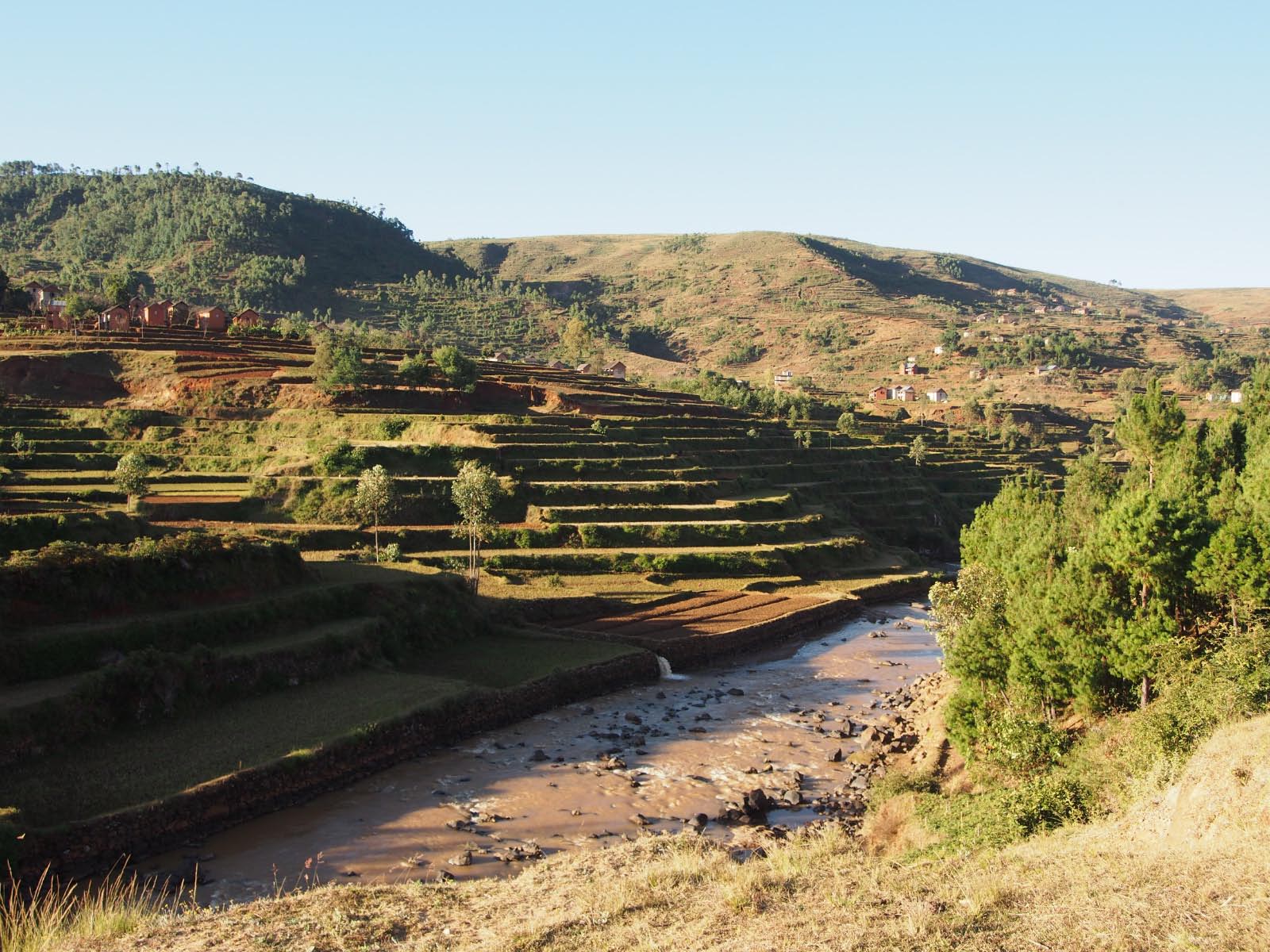 |
Map of Sakalava (green) and Imerina (pink) in the early 17th Century
|
Today's episode focuses on the rise of Sakalava, the first true empire in Malagasy history. This will be far from its last appearance, as the Sakalava kingdom (and, in the future, multiple kingdoms) will serve as the arch-rival of Imerina throughout much of its early history.
 |
| A Sakalava woman possessed by an ancestor or spirit during a Tromba ceremony. Sourced from: The Possessed and the Dispossessed by Lesley A. Sharp |
Sakalava culture is noted for it's unclear origins. Sakalava oral histories claim an origin from southwestern Madagascar of the Maroseraña royal family. Though some anthropologists from around the world speculated on potential origins from outside of Madagascar (such as Zimbabwe, India, or the Swahili Coast), more mainstream scholarly work generally confirms the oral history, though with the caveat that the Maroseraña likely intermarried and integrated multiple families from other parts of the island as well as from the southwest.
Sakalava people first emerged under the kingship of a monarch named Andriamisara, who Sakalava histories typically credit as the first true Sakalava king. He united the numerous semi-nomadic people of Western Madagascar under his yoke, marking the genesis of the Sakalava identity.
Along with lifestyle, Sakalava also practice unique traditions. Women who were subjects of the Sakalava king were required to shave their hair in times of mourning, and their diet contained more animal products and less rice than their highland neighbors. They also practiced unique religious ceremonies, such as Tromba. This ceremony involves the possession of a person by a spirit or ancestor. The experience was a positive one, with the ancestor or spirit using the possession to impart wisdom, power, or good fortune on the possessed.
 |
| A trio of Sakalava soldiers. Photo captured in 1895. |
The Sakalava succeeded in early expansion in part due to a technological advantage over their peers. Even as early as the 17th century, Sakalava soldiers made heavy use of gunpowder firearms. Perhaps more importantly, the system of Sakalava rule allowed for the kingdom to quickly expand. According to both Sakalava oral histories and the writings of European merchants, Sakalava rule was quite loose, allowing a fair amount of autonomy to local kings. People who acquiesced to Sakalava rule were rewarded, such as the Vazimba rulers who surrendered. In return, these Vazimba were given special privileges over the rivers and streams of Sakalava country, allowing for exclusive fishing and cultivation rights.
 |
The Swahili stone mansions in western Madagascar were close simulacra of Swahili stone houses found on the mainland in settlements like Songo Mnara (pictured) or Kilwa Kisiwani
|
Trade also played a key role. Swahili merchants were a major presence in West Madagascar, often living in luxurious stone mansions that dwarfed the wooden homes of even Malagasy lords. They were able to afford such homes due to their lucrative position as middlemen to much of the Malagasy economy, shipping Malagasy rice, leather, slaves, and beef across the Indian Ocean. The Malagasy, in exchange, received metals, finished goods, glass, precious shells, pearls, incense, timber, and numerous other luxury goods. European traders also made their presence known during this time, also engaging in trade of firearms, rum, glass, and other goods in exchange for timber, rice, and enslaved workers.
 |
| Swahili settlement ruins near modern Mahajanga. See earlier photo for comparison. |



















